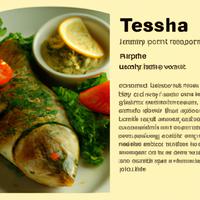
1 serving (100 grams) contains 125 calories, 23.8 grams of protein, 2.6 grams of fat, and 0.0 grams of carbohydrates.

Log this food in SnapCalorie

Nutrition Information
Calories |
297.6 | ||
|---|---|---|---|
% Daily Value* |
|||
| Total Fat | 6.2 g | 7% | |
| Saturated Fat | 1.4 g | 7% | |
| Polyunsaturated Fat | 0 g | ||
| Cholesterol | 131.0 mg | 43% | |
| Sodium | 161.9 mg | 7% | |
| Total Carbohydrates | 0 g | 0% | |
| Dietary Fiber | 0 g | 0% | |
| Sugars | 0 g | ||
| protein | 56.7 g | 113% | |
| Vitamin D | 714.3 mcg | 3571% | |
| Calcium | 23.8 mg | 1% | |
| Iron | 1.2 mg | 6% | |
| Potassium | 904.8 mg | 19% | |
* Percent Daily Values are based on a 2,000 calorie diet. Your daily values may be higher or lower depending on your calorie needs.
Food Attributes
Source of Calories
About Wild bass
Wild bass is a lean, flavorful fish found in oceans, rivers, and lakes across the globe, with popular varieties including striped bass and sea bass. Renowned for its firm texture and mild taste, wild bass is celebrated in many cuisines, particularly Mediterranean and Asian dishes, where it’s often grilled, roasted, or steamed with herbs and spices. It’s a rich source of high-quality protein, essential omega-3 fatty acids, selenium, and vitamin B12, supporting heart health, brain function, and immune strength. Wild bass is generally low in calories and saturated fats, making it an excellent choice for balanced diets. However, as a wild-caught fish, mercury levels can vary depending on the species and habitat, so moderate consumption is advised, particularly for pregnant individuals. Prized for both its nutritional benefits and versatility, wild bass is a wholesome addition to health-conscious meals.



